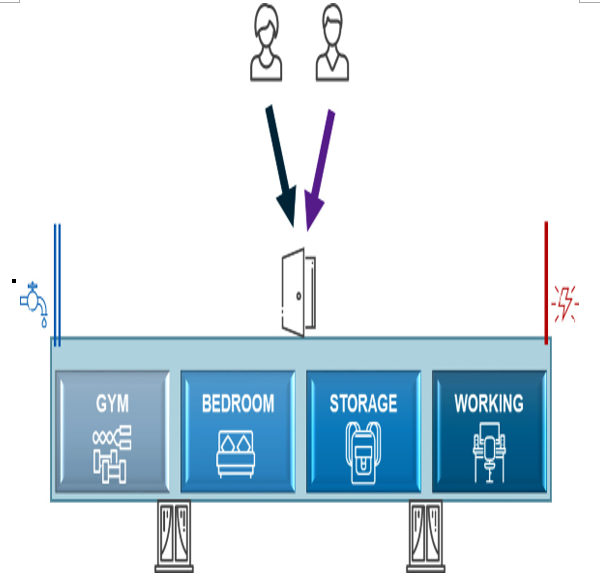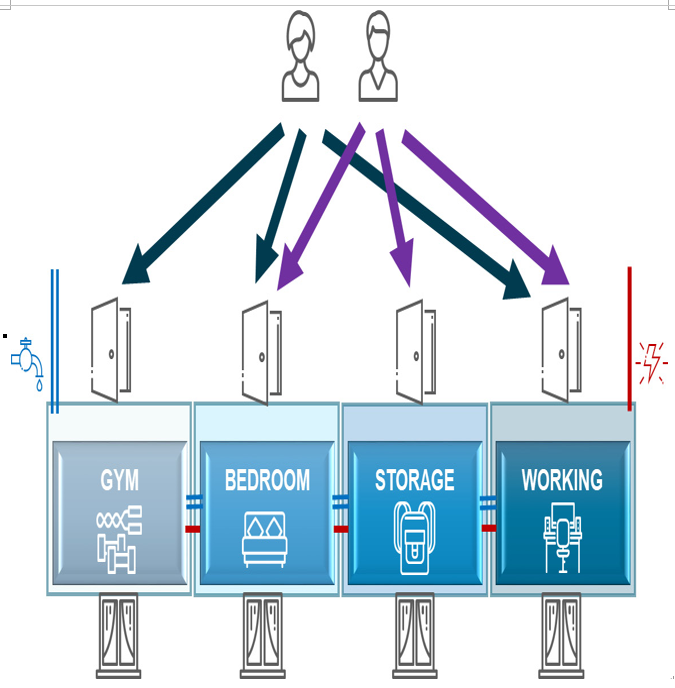Security considerations in microservices architectures
This section aims to provide a comprehensive understanding of the security implications that come with adopting a microservices approach. We will delve into the complexities introduced by this architectural style, the shift in responsibility domains, especially in cloud environments such as AWS, and the paradox of lightweight components that offer both security benefits and challenges.
Complexity paradigm
In the realm of software architecture, the transition from monolithic to microservices-based systems is akin to a short-term rental company remodeling its single-room studios into multi-room apartments. Imagine a studio with four corners designated for different functionalities: a workout corner, a sleeping area, a storage space, and a workspace area, as shown in Figure 6.6. Initially, the studio was simple to manage, with just one door as the entry point and a few windows for natural light. However, to adapt to market demands, the company decides to divide the studio into four separate rooms, each serving a specific function, as shown in Figure 6.7. This new layout offers flexibility but also introduces complexity.

Figure 6.6 – Single-room studio analogy
Now, there are multiple doors, more windows, and additional pipes and wires to manage. Just like this, microservices architecture brings flexibility but at the cost of increased complexity:

Figure 6.7 – Multi-room apartment analogy
In monolithic architecture, the application is a single entity, much like our initial studio. It is easier to manage, secure, and deploy. However, as the application grows, it becomes increasingly difficult to scale and maintain. Microservices architecture, on the other hand, breaks down the application into smaller, more manageable services, similar to the multi-room apartment. Each service is like a room with a specific function, and they all need to communicate with each other to form a complete application.
While each microservice is simpler and lighter than the entire monolithic application, the overall system complexity increases. This is because each microservice is essentially a subset of an application and needs to communicate with other services through various channels. These channels wouldn’t exist in a monolithic model. Therefore, the entire network of microservices and communication channels needs to be managed, orchestrated, and secured, adding layers of complexity and potential security risks.



